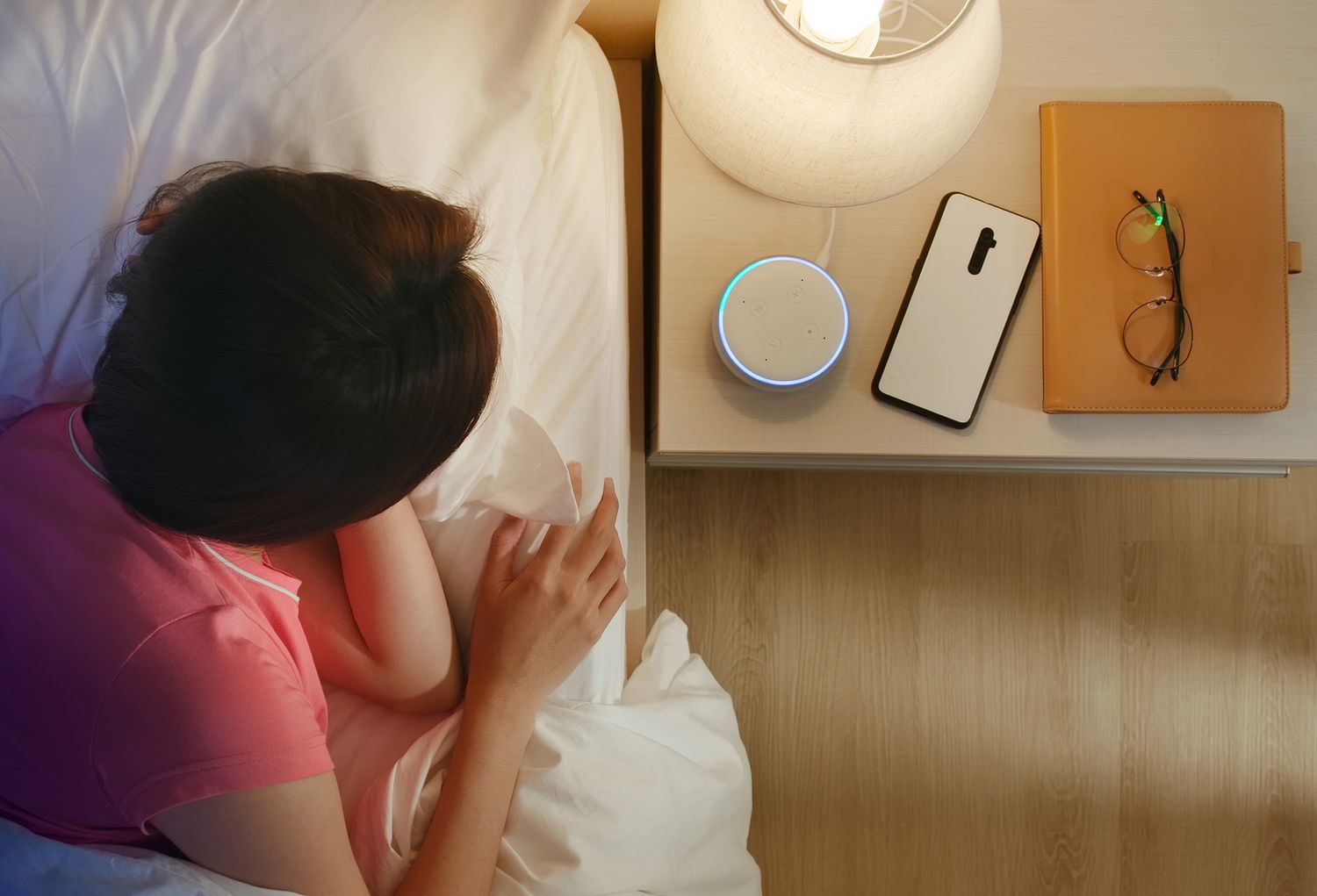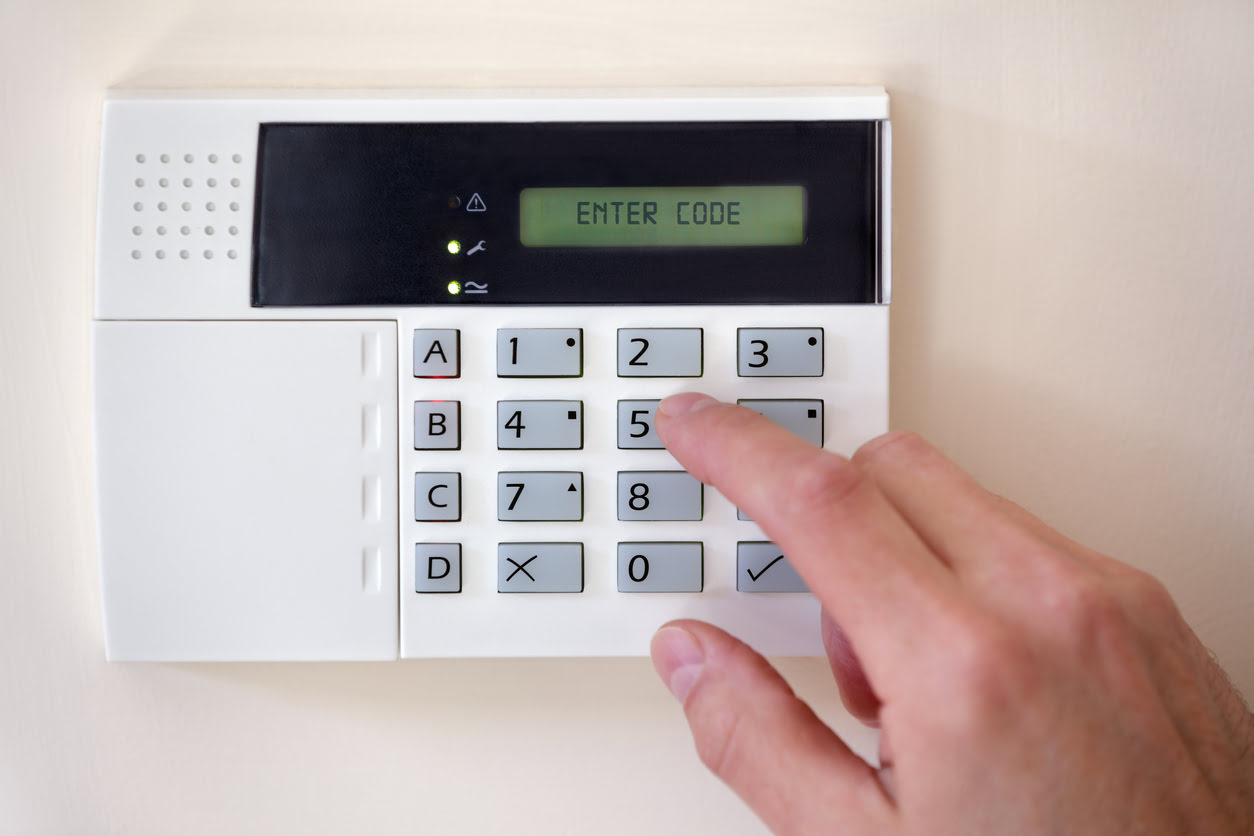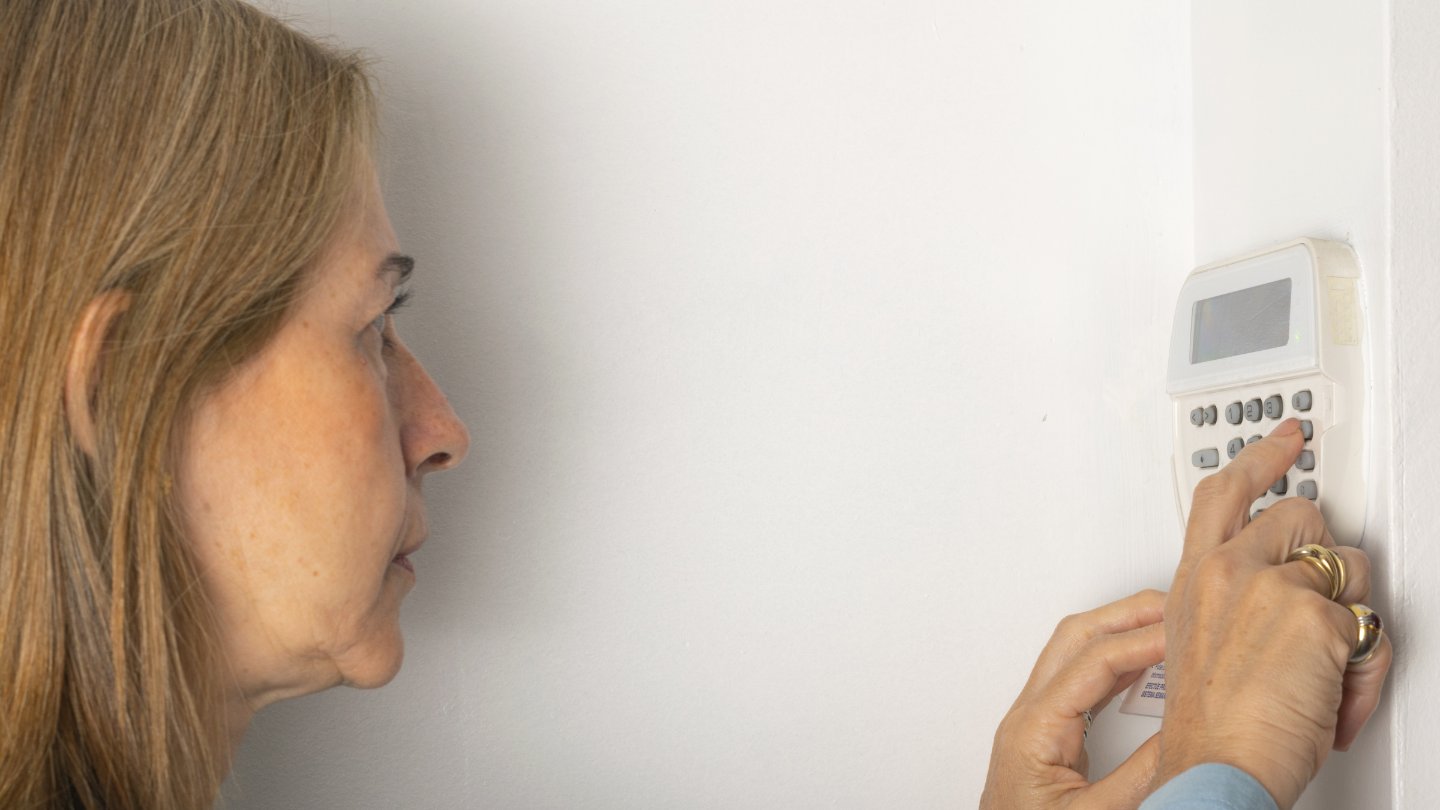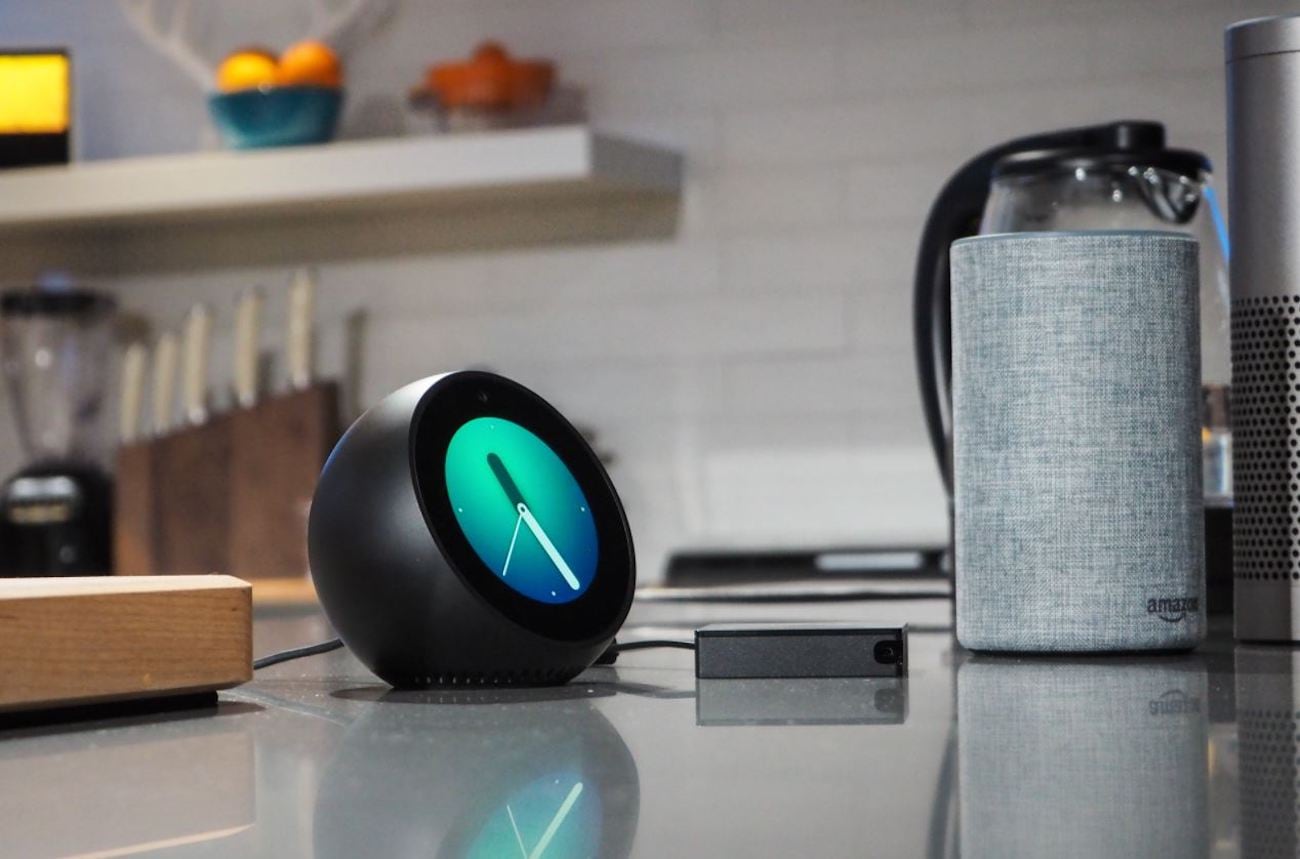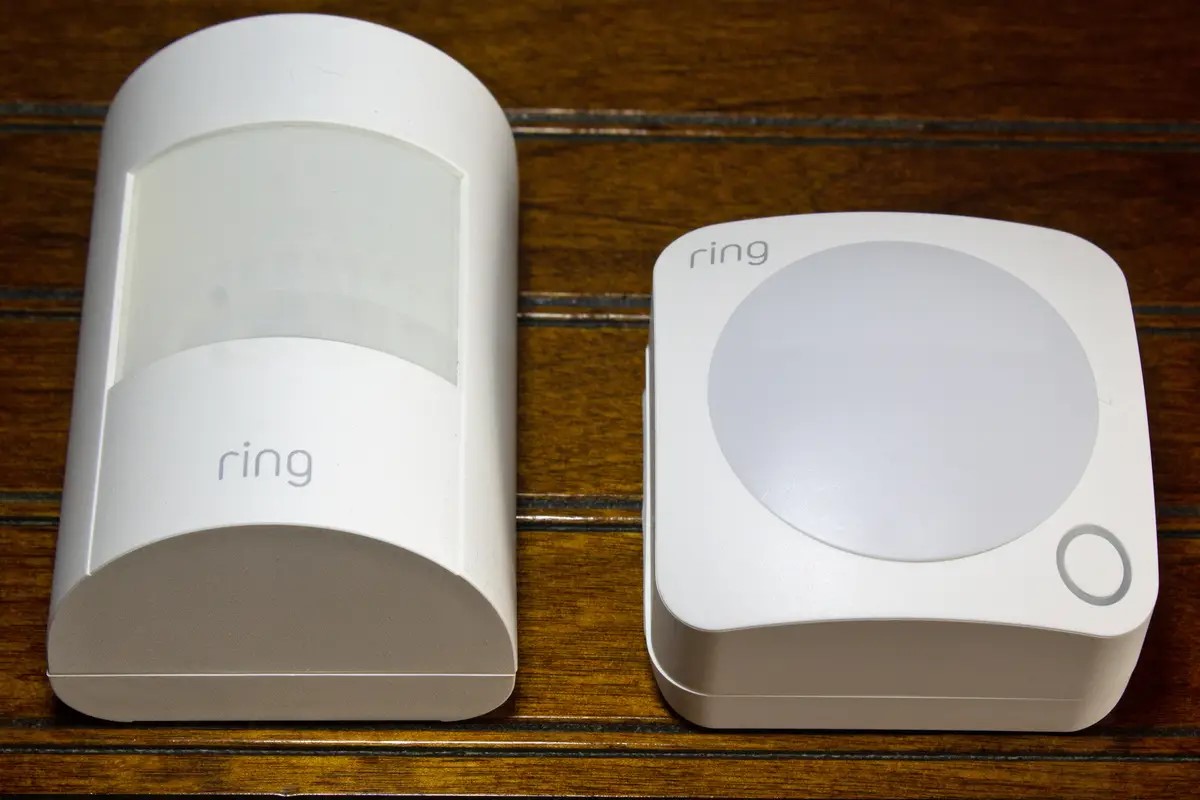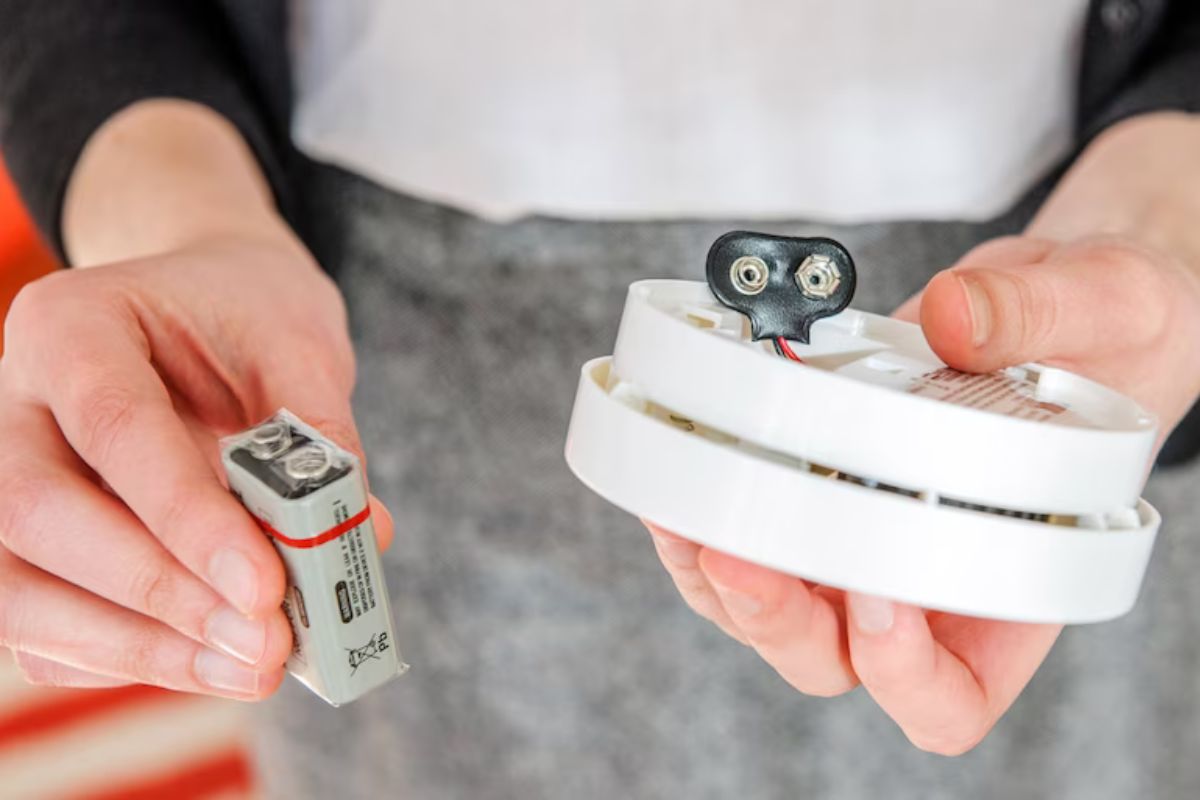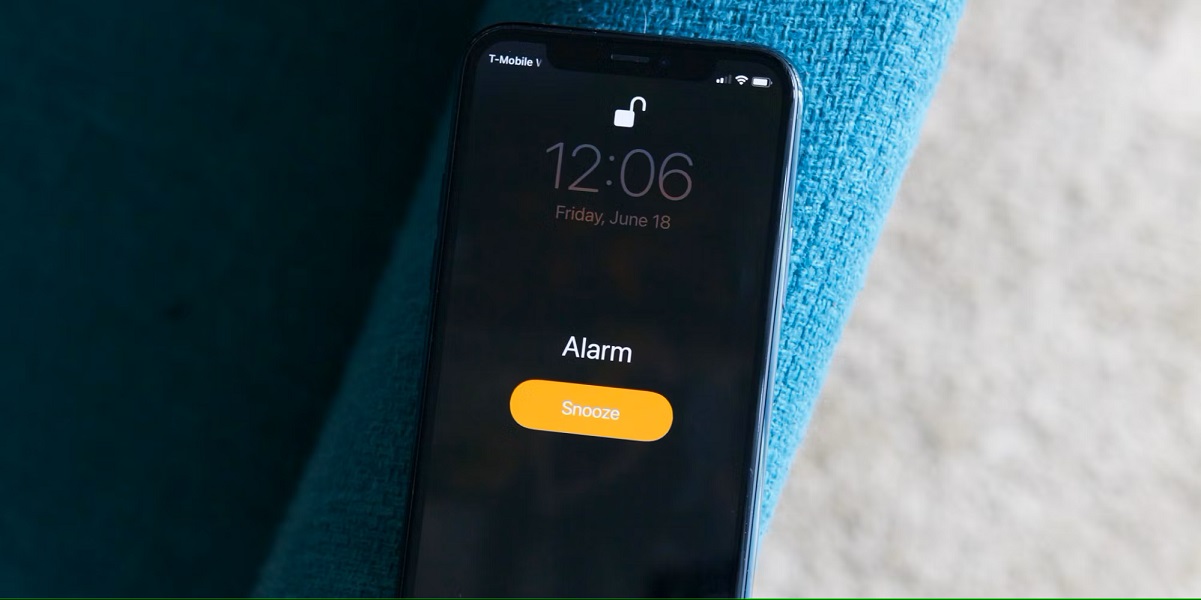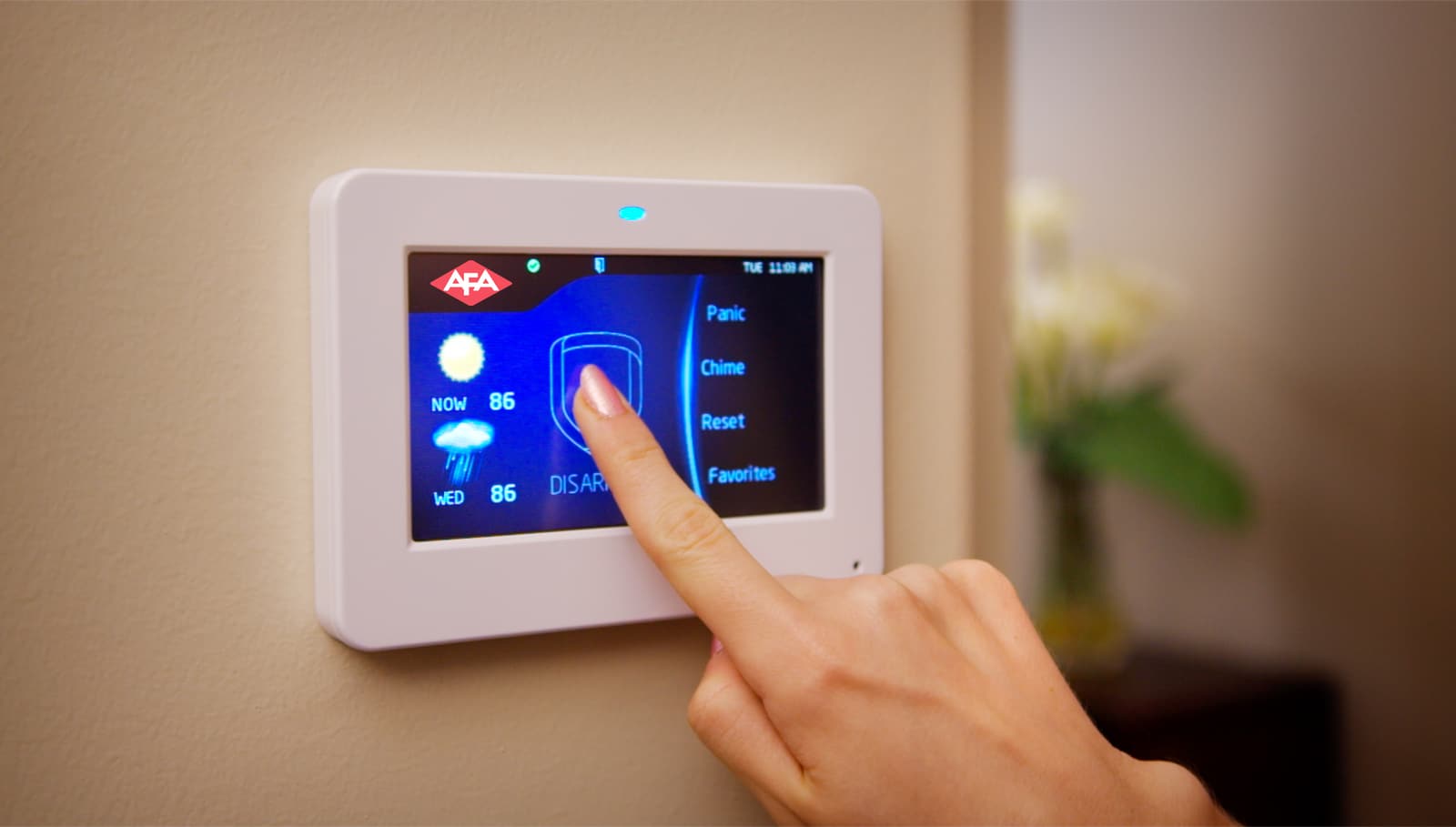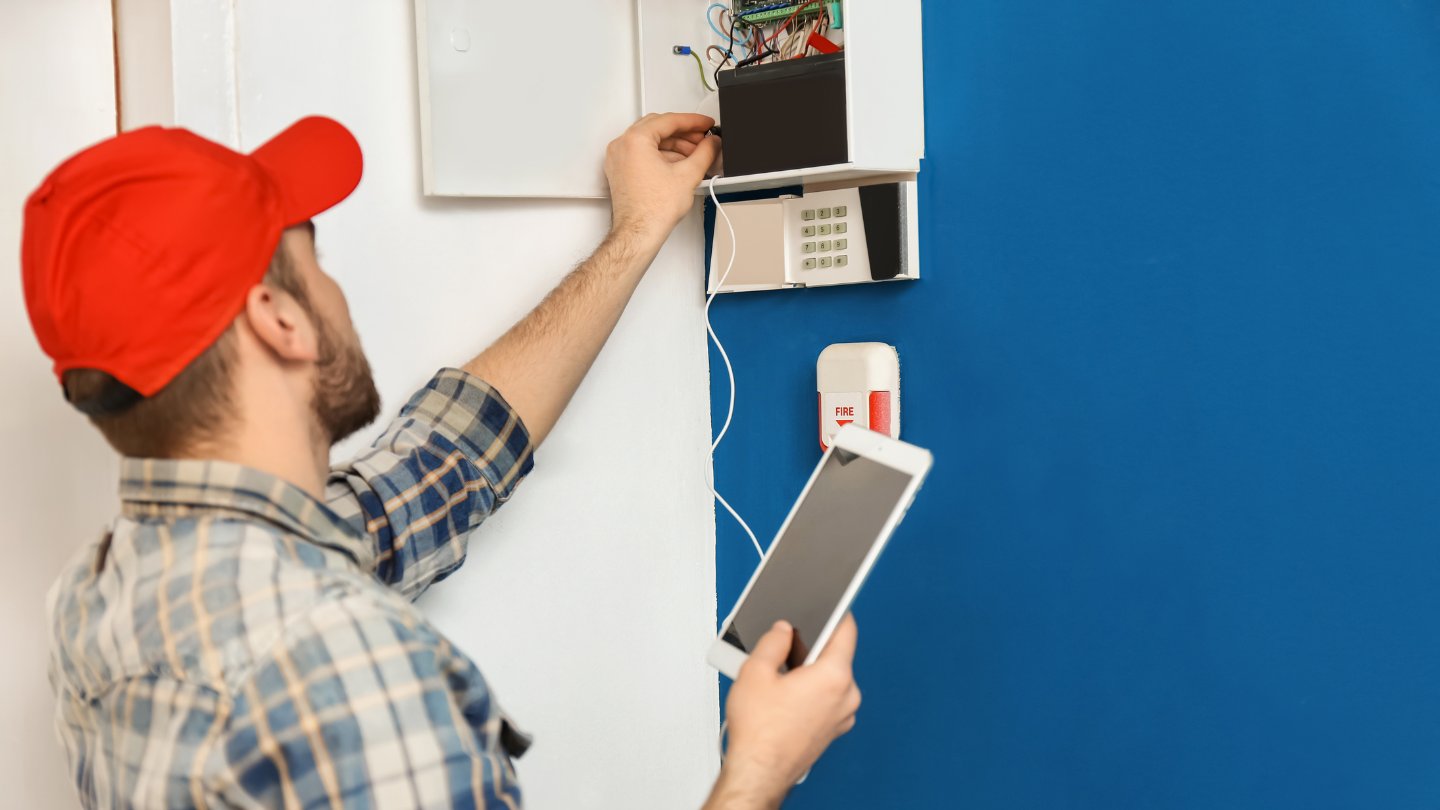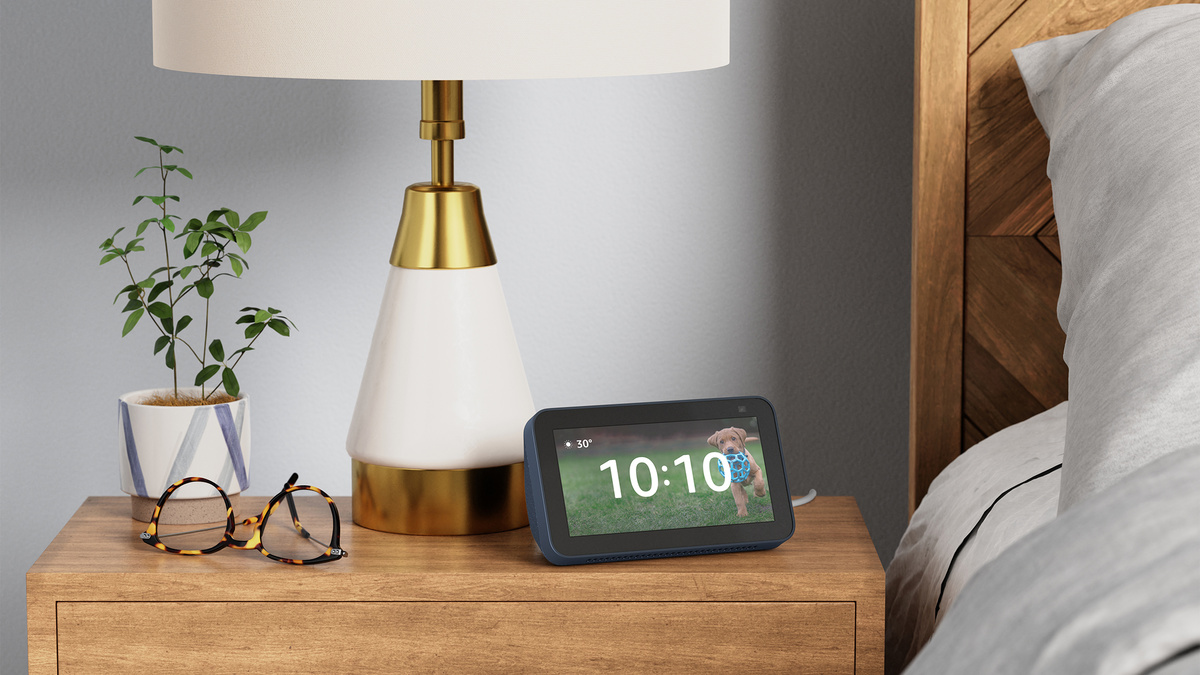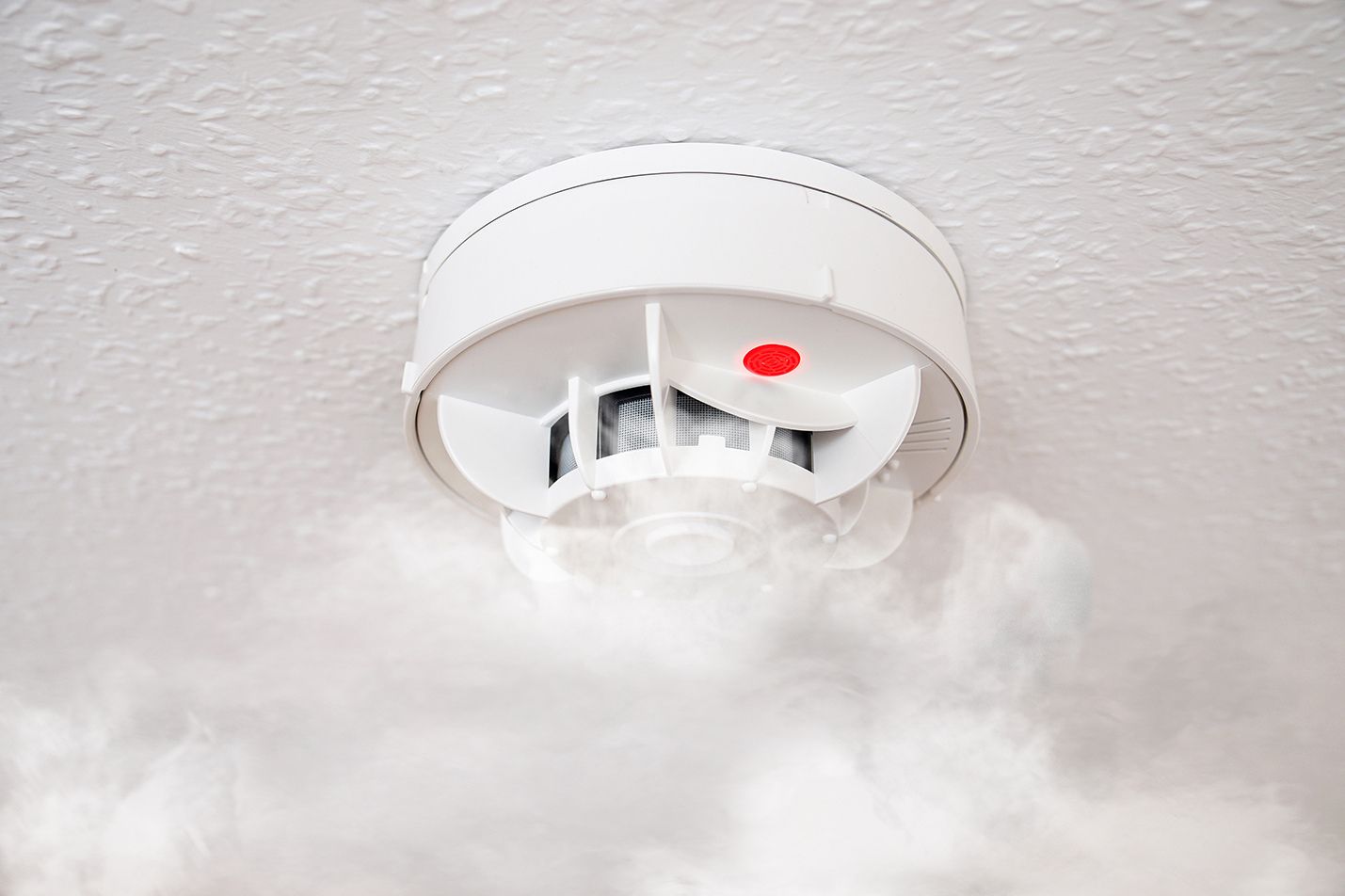Home>Home Security and Surveillance>Why Does My Burglar Alarm Go Off For No Reason
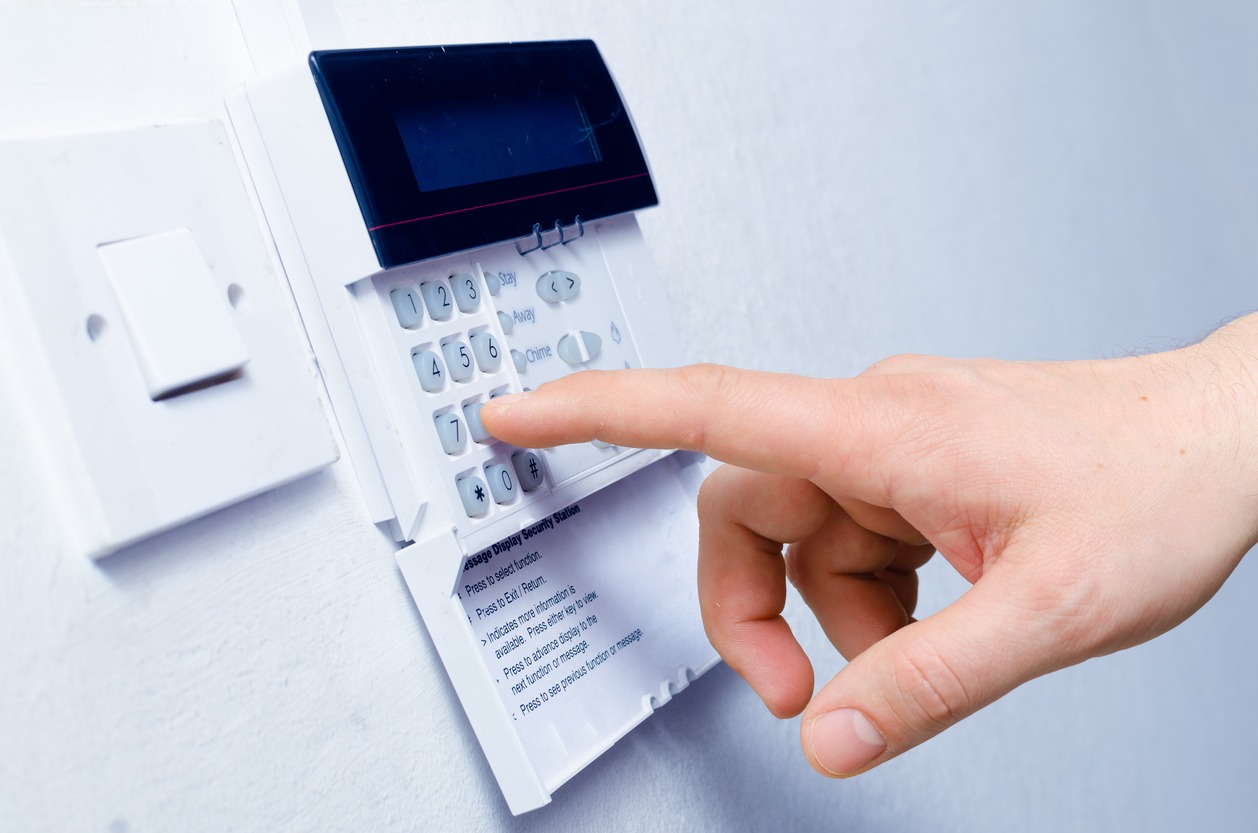

Home Security and Surveillance
Why Does My Burglar Alarm Go Off For No Reason
Modified: March 6, 2024
Discover the reasons behind your burglar alarm going off unexpectedly and learn how to prevent false alarms. Enhance your home security and surveillance with expert tips and advice.
(Many of the links in this article redirect to a specific reviewed product. Your purchase of these products through affiliate links helps to generate commission for Storables.com, at no extra cost. Learn more)
Introduction
Home security is a top priority for homeowners, and burglar alarm systems play a crucial role in protecting our properties from intruders. However, it can be frustrating when our burglar alarms go off unexpectedly, causing false alarms. These false alarms not only lead to unnecessary panic but can also result in fines and strain the relationship with our neighbors.
So, why does your burglar alarm go off for no reason? In this article, we will dive into the various factors that can cause false alarms and explore ways to prevent them. By gaining a better understanding of these issues, you can ensure that your home security system functions optimally, giving you the peace of mind you deserve.
Key Takeaways:
- Regular maintenance, proper sensor placement, and user education are crucial in preventing false alarms in burglar alarm systems. By following these tips, homeowners can ensure the reliability of their home security systems and minimize unnecessary disruptions.
- Understanding and managing environmental factors, such as wind, vibrations, and pets, can help minimize the occurrence of false alarms. Proactive measures, including regular testing and updating contact information, contribute to the effectiveness of burglar alarm systems.
Read more: Why Did The Burglar Alarm Go Off On The Car
Understanding Burglar Alarm Systems
Before delving into the causes of false alarms, it’s important to have a basic understanding of how burglar alarm systems work. A typical burglar alarm system consists of various components that work together to detect and deter potential intruders.
The central component of a burglar alarm system is the control panel. This panel is the nerve center of the system, receiving signals from various sensors and activating the alarm when it detects a break-in. The control panel is typically connected to a power source and a backup battery to ensure uninterrupted functionality.
Sensors are crucial elements of any burglar alarm system. These sensors are strategically placed around the property to detect unauthorized entry or movement. Common types of sensors include door and window sensors, motion sensors, glass break sensors, and infrared sensors. When a sensor is triggered, it sends a signal to the control panel, which in turn activates the alarm.
In addition to sensors, many burglar alarm systems also incorporate surveillance cameras and security lighting to provide an additional layer of protection. These cameras can capture footage of any suspicious activity, acting as a deterrent to potential intruders and providing valuable evidence in the event of a break-in.
Understanding the components of a burglar alarm system can help identify potential issues that may cause false alarms. Now, let’s explore some of the common reasons behind false alarms and how to address them.
Common Reasons for False Alarms
False alarms can be caused by a variety of factors, ranging from sensor malfunctions to user error. It’s important to identify and address these issues to prevent unnecessary disruptions and ensure the effectiveness of your burglar alarm system.
1. Sensor Malfunctions:
Sensors are designed to detect unauthorized entry or movement, but they can sometimes malfunction and trigger false alarms. This can occur due to faulty wiring, improper installation, or even environmental factors such as extreme temperatures or humidity. Regular inspection and maintenance of sensors can help identify and fix any malfunctions. If you notice a specific sensor triggering false alarms consistently, it may need to be replaced or recalibrated.
2. Equipment Defects:
Burglar alarm systems are complex systems that rely on multiple components working in harmony. However, there can be instances where a defect in the control panel, the sensors, or other equipment can lead to false alarms. If you suspect a defect in your equipment, it’s important to contact your alarm system provider for troubleshooting and potential replacement.
3. User Error:
Sometimes, false alarms can occur due to user error. This can happen when the system is not armed correctly, or when authorized users accidentally trigger the alarm. It’s essential to ensure that all authorized users are properly trained on how to arm and disarm the system and are aware of any specific protocols to avoid false alarms.
4. Environmental Factors:
Environmental factors such as strong winds, excessive vibrations, or the presence of pets can also cause false alarms. It’s crucial to position sensors properly and make any necessary adjustments to mitigate the impact of these external factors on your burglar alarm system.
By understanding these common reasons for false alarms, you can take proactive measures to minimize their occurrence. Regular maintenance, proper training, and staying aware of environmental factors will greatly reduce the likelihood of false alarms and enhance the efficiency of your home security system.
Sensor Malfunctions
Sensors are the frontline defense of your burglar alarm system, detecting any unauthorized entry or movement. However, like any electronic device, sensors can experience malfunctions that lead to false alarms. Understanding the potential causes and how to address them can help ensure the accuracy and reliability of your burglar alarm system.
One common cause of sensor malfunctions is faulty wiring. The wiring connecting the sensor to the control panel may become loose or damaged over time, resulting in intermittent or incorrect signals being sent to the control panel. Regularly inspecting the wiring and ensuring it is secure and in good condition can help prevent this issue.
Improper installation can also lead to sensor malfunctions. Sensors should be installed in a way that ensures optimal coverage and sensitivity while minimizing false alarms. If sensors are installed too close to heat sources, such as radiators or heating vents, they may pick up on rapid temperature changes and trigger false alarms. Similarly, sensors placed near windows or doors that are subject to drafts or vibrations can also result in false alarms. Ensuring proper sensor placement during installation can help mitigate these issues.
In addition to wiring and installation issues, environmental factors can also impact sensor performance. Extreme temperatures, high humidity, and condensation can interfere with sensor function and trigger false alarms. Regular maintenance, such as cleaning sensors and ensuring they are free from moisture or debris, is essential to prevent malfunctions caused by environmental factors. Additionally, some sensors may have adjustable sensitivity settings that can be fine-tuned to minimize false alarms without compromising security.
If you notice a specific sensor consistently triggering false alarms, it may indicate a malfunction. In such cases, it is best to contact your burglar alarm system provider for assistance. They can guide you through troubleshooting steps and potentially replace the sensor if necessary.
Regular maintenance plays a crucial role in preventing sensor malfunctions. Conducting routine checks on each sensor, testing their functionality, and replacing batteries as needed can help identify and address any potential issues before they result in false alarms.
Overall, sensor malfunctions are a common cause of false alarms in burglar alarm systems. By understanding the potential causes and implementing regular maintenance procedures, you can significantly reduce the occurrence of false alarms and maximize the effectiveness of your home security system.
Equipment Defects
Burglar alarm systems are a combination of various components, including the control panel, sensors, and other equipment. While these components are designed to work seamlessly together, there can be instances where equipment defects occur, leading to false alarms. Understanding the potential issues and how to address them is essential for maintaining the integrity of your burglar alarm system.
One common equipment defect that can result in false alarms is a malfunctioning control panel. The control panel serves as the brain of the system, receiving signals from sensors and activating the alarm when an intrusion is detected. If the control panel is not functioning properly due to a defect, it may misinterpret signals or trigger the alarm when there is no actual threat. In such cases, it is important to contact your burglar alarm system provider for troubleshooting and potential replacement of the control panel.
Faulty sensors can also be a source of equipment defects leading to false alarms. Sensors that are damaged or not calibrated correctly may generate inaccurate readings, causing the alarm to be triggered unnecessarily. It is important to regularly inspect and test the sensors to ensure they are in proper working condition. If you notice any abnormalities or inconsistencies in sensor performance, contact your alarm system provider for assistance, as the sensors may need to be repaired or replaced.
Other equipment defects, such as faulty wiring or power supply issues, can also contribute to false alarms. Wiring that becomes loose or damaged over time can lead to intermittent signals being sent to the control panel, resulting in false alarms. Regularly inspecting the wiring connections and ensuring they are secure can help prevent this issue. Similarly, power supply problems, such as a weak or failing battery, may lead to erratic system behavior and false alarms. Regularly checking the power supply and replacing batteries as needed is vital for avoiding such equipment defects.
Addressing equipment defects requires prompt action and professional assistance. If you suspect any equipment defects in your burglar alarm system, contact your alarm system provider for troubleshooting steps or to request a technician to inspect and repair the equipment. Experienced technicians can diagnose the cause of the false alarms and take appropriate measures to rectify the equipment defects.
Regular maintenance and inspection of your burglar alarm system are crucial for identifying and addressing equipment defects. By proactively monitoring the system and promptly addressing any issues, you can minimize false alarms and ensure the overall effectiveness of your home security system.
Check for loose sensors or wiring, as they can trigger false alarms. Also, make sure the alarm system is not affected by pets, drafts, or nearby objects.
Read more: How Long Will A Burglar Alarm Go Off For
User Error
While burglar alarm systems are designed to be intuitive and user-friendly, user error can still contribute to false alarms. It is important for all authorized users to be properly trained on how to operate the system to minimize the risk of false alarms caused by inadvertent actions.
One common user error that can result in false alarms is failing to arm the system correctly. It is essential to follow the proper arming procedure, whether it is through a keypad, a key fob, or a mobile app. Neglecting to fully arm the system or accidentally triggering a partial arm mode can lead to false alarms when sensors detect movement or unauthorized entry.
Another user error that can cause false alarms is accidentally triggering the alarm during routine activities. For instance, if a user forgets to disarm the system before entering the property or opening a window, the sensors will detect the movement and trigger the alarm. Users should be vigilant about arming and disarming the system as needed to prevent false alarms during everyday tasks.
It is important to communicate clear instructions to all authorized users about how to operate the alarm system correctly. This includes educating them about any unique features or specific protocols, such as confirmation codes or delay periods. Regular reminders and training sessions can help prevent user error and reduce the likelihood of false alarms.
In the event of accidental triggering of the alarm, users should know how to promptly cancel the alarm before it sends a signal to the monitoring center or authorities. This can typically be done by entering a code or using a designated panic button on the control panel or a key fob. By canceling the alarm quickly, users can prevent unnecessary emergency responses and mitigate the disruption caused by false alarms.
If false alarms persist due to user error, it may be beneficial to invest in additional features or technologies that can help minimize the risk. For example, some systems offer remote access and control, allowing users to arm or disarm the system remotely, reducing the chance of forgetting to do so when entering or leaving the property.
Proper user education and awareness are vital for minimizing false alarms caused by user error. By ensuring that all authorized users are well-informed and trained on how to correctly operate the burglar alarm system, you can significantly reduce the occurrence of false alarms and maintain the integrity of your home security system.
Environmental Factors
Environmental factors can play a significant role in triggering false alarms in burglar alarm systems. Understanding and managing these factors can help minimize the occurrence of false alarms and ensure the reliability of your home security system.
One common environmental factor that can cause false alarms is strong winds. The movement of tree branches, swinging doors, or rattling windows due to high winds can be detected by motion sensors, leading to false alarms. To mitigate this issue, it is essential to adjust the sensor sensitivity settings or consider using different types of sensors that are less sensitive to motion caused by wind.
Excessive vibrations can also contribute to false alarms. For example, vibrations caused by heavy machinery, construction activities, or nearby traffic can be detected by sensors, triggering false alarms. Properly securing the sensors and ensuring they are not in direct contact with vibrating surfaces can minimize the impact of such environmental vibrations.
Pets can also be a source of false alarms. If you have pets that roam freely in your home, their movement can trigger motion sensors, leading to false alarms. Pet-immune sensors are specifically designed to differentiate between human and pet movement, making them a valuable solution for pet owners. These sensors are programmed to ignore the movement of small animals, reducing the likelihood of false alarms.
Extreme temperatures can affect the performance of sensors and result in false alarms. High temperatures can cause sensor components to expand, leading to changes in sensitivity and triggering false alarms. On the other hand, extremely low temperatures can affect battery performance, decreasing the reliability of the system. Regular maintenance, including checking sensor functionality and replacing batteries as needed, can help mitigate the impact of temperature extremes.
Other environmental factors, such as excessive dust, humidity, or condensation, can also interfere with the proper functioning of sensors and cause false alarms. Regular cleaning and maintenance of sensors, especially in areas prone to dust accumulation or humidity, can help prevent false alarms caused by these factors.
Proper placement of sensors is crucial to minimizing the impact of environmental factors. Consider the specific environmental conditions in each area of your property when positioning sensors. For example, avoid placing sensors near windows or vents that may be subject to drafts or temperature fluctuations. Additionally, positioning sensors away from direct sunlight and sources of heat can help maintain accurate readings and reduce false alarms.
By being aware of potential environmental factors that can trigger false alarms, you can take proactive measures to minimize their impact. Regular maintenance, proper sensor placement, and considering the use of pet-immune sensors are effective strategies for managing environmental factors and reducing false alarms in your burglar alarm system.
Tips for Preventing False Alarms
False alarms can be a nuisance and cause unnecessary anxiety. To prevent false alarms and ensure the effectiveness of your burglar alarm system, consider implementing the following tips:
1. Regular Maintenance: Conduct regular maintenance checks on your burglar alarm system. Inspect the sensors, control panel, and wiring for any signs of damage or malfunction. Replace batteries as needed, and clean sensors to ensure they are free from dust or debris. Regular maintenance helps identify and address any potential issues before they result in false alarms.
2. Proper Sensor Placement: Ensure that sensors are placed in appropriate locations. Avoid placing sensors near heat sources, such as radiators or heating vents, as rapid temperature changes can trigger false alarms. Similarly, position sensors away from windows that may be subject to drafts or vibrations. Follow the manufacturer’s guidelines for optimal sensor placement.
3. User Education: Properly train all authorized users on how to operate the burglar alarm system correctly. Make sure they understand the arming and disarming procedures, as well as any specific protocols or features. Regularly remind users about the importance of avoiding accidental triggers and how to handle false alarms if they do occur.
4. Test System Regularly: Test your burglar alarm system on a regular basis to ensure that it is functioning properly. This can be done through a self-test feature or by contacting your alarm system provider to schedule a test. Testing allows you to identify any potential issues and address them before a false alarm occurs.
5. Adjust Sensor Sensitivity: If you experience frequent false alarms, consider adjusting the sensitivity of your sensors. Most sensors allow you to customize their sensitivity levels to better suit your specific environment. Fine-tuning the sensor settings can help minimize false alarms while still maintaining optimal security coverage.
6. Update Contact Information: Keep your contact information up to date with your alarm system provider. This ensures that in the event of a genuine alarm, they can reach you or your designated emergency contacts promptly. Outdated contact information may lead to unnecessary dispatching of emergency services due to an inability to reach you for verification.
7. Secure Access Points: Ensure that all doors, windows, and other access points are properly secured when the burglar alarm system is armed. This includes checking for loose or faulty locks and ensuring that doors and windows are closed and latched securely. Securing access points reduces the likelihood of accidental triggers from movement or unauthorized entry.
By following these tips, you can significantly reduce the occurrence of false alarms in your burglar alarm system. Regular maintenance, proper sensor placement, user education, and proactive testing are key to maximizing the effectiveness of your home security system while minimizing false alarms.
Conclusion
False alarms can be a common issue with burglar alarm systems, causing unnecessary panic, inconvenience, and potentially strained relationships with neighbors and authorities. However, by understanding the common reasons for false alarms and implementing preventive measures, you can greatly reduce the occurrence of false alarms and ensure the reliability and effectiveness of your home security system.
It is crucial to periodically inspect and maintain your burglar alarm system, checking for any sensor malfunctions, equipment defects, or user errors that may contribute to false alarms. Proper sensor placement, adjusting sensitivity settings, and user education are key factors in preventing false alarms. Additionally, taking into account environmental factors such as winds, vibrations, and pets can help minimize the risk of false alarms triggered by external influences.
Regular testing of your burglar alarm system allows you to identify any potential issues and address them promptly before they result in false alarms. By performing routine tests, you can ensure that your system is functioning correctly and provide peace of mind for yourself and your family.
Remember, user education is crucial in preventing false alarms. Make sure all authorized users are properly trained on how to arm and disarm the system, as well as how to avoid accidental triggering. Additionally, keeping your contact information up to date with your alarm system provider ensures efficient communication in case of a genuine alarm event.
By following these tips and taking proactive measures, you can greatly minimize the occurrence of false alarms and maintain the effectiveness of your burglar alarm system. Remember, a well-maintained and properly used system provides optimal security and peace of mind for you and your loved ones.
Frequently Asked Questions about Why Does My Burglar Alarm Go Off For No Reason
Was this page helpful?
At Storables.com, we guarantee accurate and reliable information. Our content, validated by Expert Board Contributors, is crafted following stringent Editorial Policies. We're committed to providing you with well-researched, expert-backed insights for all your informational needs.
